And again to the question of the Soviet "thirty-four" mod. 1943 and German T-IVH
Article "And again about the" four "and" thirty-four " I very briefly examined the evolution of the most massive Soviet and German tanks during the Second World War in its early years. Of course, in 1941, in the "dispute" between T-34 and T-IV, it is difficult to determine an unambiguous leader - both tanks had their own pronounced advantages, but also serious disadvantages. Situational awareness and reliability became the hallmark of the German tank, but its defense and gun were downright weak. The "thirty-four" - exactly the opposite.
And we can see that 1941-1942 the direction of modernization of these two tanks was fundamentally different. The USSR took the path of simplifying the design, improving manufacturability, on the one hand, and increasing the resource of mechanisms to the passport values, on the other. In other words, the stake was made on improving reliability and meeting the requirements of mass production in factories that did not know how it was to produce medium tanks before. At the same time, German designers and technologists were solving completely different tasks: they worked to improve the combat qualities of the T-IV. The armor was strengthened constantly, literally in every modification of the "four", and from March 1942 the tank also received a powerful long-barreled 75-mm gun KwK.40 L / 43. Thus, the protection and firepower of the brainchild of the "gloomy Teutonic genius" number IV has grown dramatically.
Why did it happen?
The answer is obvious.
Both the German and the Soviet tank were very outstanding designs of their time, but they were at different stages of their life cycle. Very broadly, the main milestones in the existence of such a technique can be described as follows.
First, the design of the machine is carried out, the creation of prototypes and their testing. Then serial production and operation begins, during which various childhood diseases of technology are identified and eliminated. Absolutely everyone goes through this stage, it is enough to recall the frankly low operational characteristics of the first German tanks (apotheosis - the Anschluss of Austria) and the problems of technical reliability of the first serial "Tigers" and "Panthers".
Then comes the long-awaited period of prosperity, when at the disposal of manufacturers and the military there is a product that has been worked out in mass production and is reliable in operation. Moreover, if the design is good, then it has significant modernization potential. Of course, over time, the technique becomes obsolete. And it was then that the performance characteristics of the tank were brought to the current requirements. But sooner or later a moment comes when the design acquires a limiting character, and in the future it becomes impossible to improve any characteristic (without unacceptable deterioration of other qualities). Then we can already talk about the exhaustion of the modernization potential. And when the performance characteristics of equipment, brought to their maximum level, cease to meet the requirements of the time, the design becomes completely obsolete.
So in 1941 the Germans had a serious advantage - their "four" was developed earlier, produced in series since 1937, and its "childhood diseases" had long been eradicated. That is, the German designers had an excellent combat vehicle, reliable in operation, mastered by production and had great potential. Since in 1940-1941, the performance characteristics of the T-IV did not openly meet the challenges of the time, the Germans used this potential for its intended purpose, improving armor and weapons. Thus, in the T-IV ausf. F2 and G the Germans, having significantly increased the mass of the tank, dramatically improved its performance characteristics and received a wonderful combat vehicle. She had only one problem - the design acquired a limiting nature, so that in the future it was no longer possible to seriously improve this tank. The Quartet's modernization potential has been exhausted.
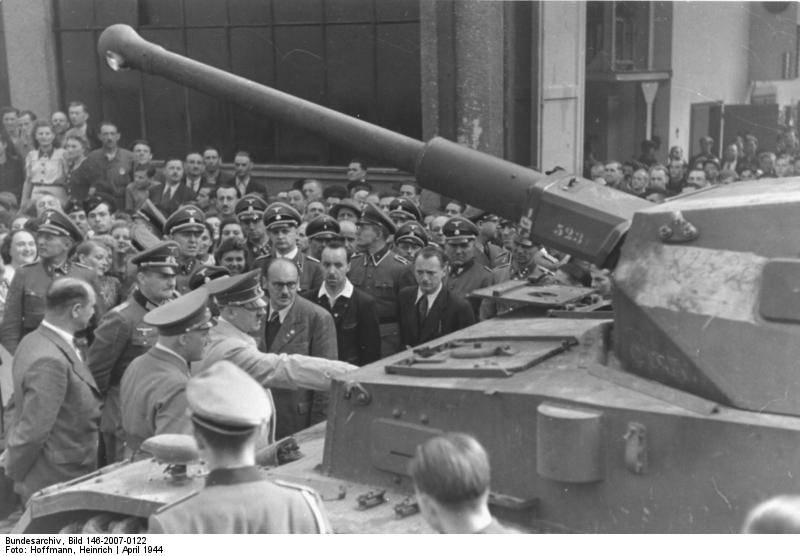
Hitler and T-IVF2
But the T-34 in the same 1941 was at the stage of eradicating "childhood diseases". It still had to become that reliable machine, mastered in production and operation, which was already the T-IV. And, for obvious reasons, the development of the T-34 was considerably delayed: it had to be done in conditions of a military deficit, the evacuation of industry and the deployment of production of the "thirty-four" at new factories.
As a result, we got a truly reliable and technologically advanced tank only by March 1943, when new high-quality air purifiers, a five-speed gearbox, clutch improvements, etc. began to be installed on the T-34. But here I would like to note a couple of nuances.
Without a doubt, the reliability of the T-34 units in many cases could not be equal to that provided by the German tank builders for the Quartet. So, for example, the resource of the domestic B2 diesel engine in 1943 reached 250 hours, but German engines sometimes could show four times more. However, it is not the comparison of absolute figures that is important here, but the compliance of the resource with the tasks facing the tank. The fact is that already in 1942, "thirty-fours", with all their shortcomings, were quite suitable for conducting deep tank operations. This was proved during the Battle of Stalingrad, when our tank units could first move on their own to their original positions, overcoming more than a hundred kilometers, then fight in defensive battles, and then go on the offensive, overcoming 150-200 km.
Yes, the T-34 in 1942 still did not have a turret for three crew members. Yes, the observation devices left much to be desired. Yes, mechanic drivers still had to fight not only with the Nazis, but also with the control levers, which in certain circumstances required an effort of up to 32 kg. And yes, the resource of the same engine often did not reach the prescribed 1942 hours in 150. But all the same, the technical condition of the tank already allowed its use for its main purpose - mobile tank warfare, including operations to encircle large enemy military groupings.
Nevertheless, of course, the T-34 model 1942 - early 1943 does not look very good against the background of the German T-IV ausf. F2, equipped with a long-barreled 75-mm artillery system.
Came 1943
From April 1943, the Wehrmacht began to receive probably the most advanced modification of the T-IV, namely the Ausf. H. The first tanks of this series differed from the previous Ausf. G for the most part only with reinforced turret roof armor However, since the summer of that year, the vertically positioned frontal parts of the Ausf. H steel was produced from 80 mm solid-rolled armor. As mentioned earlier, in the previous modification, these parts had a thickness of 50 mm and additional 30 mm armor plates were welded or bolted on top of them. And, since monolithic armor is still more projectile resistant than two sheets of the same total thickness, the German tankers received better protection with the same mass of the part.
The last statement, however, can be argued. However, the calculation using the de Marra formula shows that the projectile requires less energy to break through a solid cemented slab of 80 mm than to break two cemented slabs of 50 and 30 mm, even taking into account the loss of the ballistic tip on the 1st slab. Of course, de Marr's formula is not intended to assess the durability of armor of such small thicknesses (it works more or less correctly at thicknesses over 75 mm), and this could give its own error. But another thing should be taken into account - a shell hit in the frontal part, with a welded (or bolted) 30 mm armor plate could, without even breaking through the armor, knock such a plate out of its place, and make the tank's forehead more vulnerable to subsequent shells.
So, the T-IV defense reached its peak - in the Ausf. The thickness of the armor plates was increased to their maximum values, and did not increase in the future. At the same time, in 1943, the quality of German armor had not yet dropped, so we can say that it was Ausf. N has become the most protected "four". And also Ausf. N became its most massive version - in total from April 1943 to May 1944, according to M. Baryatinsky, at least 3 tanks were produced, not counting self-propelled and assault guns on its chassis.
But, on the other hand, it is Ausf. H became a "turning point" in which the quality of the German T-IV medium tank, having reached its peak, began to decline.
The fact is that in the summer of 1943, along with the last strengthening of the armor, the tank also received anti-cumulative screens of 5 mm sheets. The value of such protection, frankly, was very, very ambiguous.
Yes, the Red Army's "armor-piercing" shells appeared in some noticeable quantity in 1942. But their quality, in general, left much to be desired. They were mainly equipped with guns with a relatively low initial velocity of the projectile - 76-mm "regiments" mod. 1927 and 1943, and since 1943 - and 122-mm howitzers of the 1938 model. In addition, our infantry received RPG-1943 cumulative grenades by mid-43, and RPG-6 in October of the same year.
The cumulative shells, of course, significantly increased the anti-tank capabilities of the regimental "three-inch" tanks, but still, by that time, the Soviet troops were saturated with 45-mm anti-tank equipment and 76-mm ZiS-3, which coped very well with the 30 mm T-IV side armor.
It is likely that the “shields” of the fours defended the 5 mm HEAT ammunition well, but at the cost of situational awareness of the tank crew. "Quartet" of the previous modification Ausf. G had 12 sighting slots for observing the battlefield. Five of them were located in the commander's cupola, providing the tank commander with all-round visibility. The loader had four more such slots. The gunner did not have any means of sight, except, in fact, the sight of the gun, but the driver had two sighting slits (forward and to the right), and the radio operator had one. Oddly enough, but German tanks neglected periscope observation devices - only the driver had such (however, rotary, KFF.2).
As you know, Ausf. The number of viewing slots was halved - from 12 to 6. Five slots in the commander's cupola and one in the mechanized drive remained. The rest of the sighting slots simply lost their meaning - the view from them was blocked by anti-cumulative screens.
Further it gets worse.
The front demanded new and new tanks - as many as possible. And the Germans were forced to go for a fair simplification of the design of the T-IV Ausf. N. As a result, the tank lost its only periscopic observation device - the driver-mechanic of the Quartet was left with only one sighting slot, while some of the tanks also lost the electric motor that rotates the turret. Now it had to be rotated manually ... The exact amount of Ausf. The author does not know about these "innovations", but we can safely assume that tanks with such a complete set rolled off the assembly line towards the end of the production of this modification.
But what about the Soviet tank forces in general and the T-34 in particular?
The gradual increase in the reliability of the T-34, as the factories master it, was already mentioned earlier. Since January 1943, our T-1943s received high-quality Cyclone air cleaners, thanks to which the tank's engine resource sometimes exceeded the passport value. Since June 34, all factories producing T-XNUMXs have mastered a new gearbox, after which tank control has ceased to be the lot of "miracle heroes".
The situation with observation devices has also improved significantly, which was described by me in the article “On the evolution of observation and fire control devices T-34". Unfortunately, the installation of the commander's cupola did little. Firstly, using it remained inconvenient for the tank commander in battle, if only because of the need to move in a cramped turret. Secondly, the viewing slots were poorly located, so that they could only be used with the hatch open. Thirdly, the commander's cupola itself was poorly protected and easily penetrated even with small-caliber shells.
But the appearance of very successful periscopic observation devices MK-4 and the provision of the loader with its own periscopic device, of course, significantly increased the situational awareness of the T-34. Yes, of course, the Germans had a tank commander who was not involved in maintaining the gun, who could constantly observe the battlefield, which was a great advantage. But at his disposal were only 5 observation slots of the commander's tower, into which, with all his desire, he could not look at the same time.
In the T-34, two people could observe the situation at once. But, of course, only when the tank was not firing. Thus, it turned out that while moving across the battlefield, the advantage in visibility could even remain behind the Soviet tank (usually the fire was fired from short stops).
Of course, not all "thirty-fours" received MK-4, many had to be content with domestic devices, which had a relatively narrow field of view (26 degrees). But let's not forget that the same PT-K, in fact, was a "tracing paper" from a tank sight and had an increase of up to 2,5x, which, obviously, was a great advantage over the usual viewing slot.
Accordingly, we can say that ...
In terms of technical reliability
T-34 mod. 1943 was inferior to the T-IVH, but its resource was quite enough for participation in offensive operations and deep coverage of enemy military groupings. In other words, the reliability of the T-34 made it possible to solve the tasks facing the tank.
Ergonomic
T-34 mod. 1943 was inferior to the T-IVH, but the gap was significantly reduced. While for the T-34 they made a more convenient turret and tank control, the Germans somewhat deteriorated ergonomics - the placement of a powerful 75-mm gun could not but affect the armor volume of the German tank's turret. In general, the ergonomics of the T-34 were quite capable of solving the tasks facing the tank.
In terms of situational awareness
As mentioned above, it deteriorated significantly in the German tank. And it has greatly improved in the Soviet. In my opinion, the T-34 arr. 1943 and T-IVH, if not equivalent, are very close, even taking into account the additional crew member of the Quartet.
In terms of mobility
The specific power of the T-IVH was 11,7 liters. with. per ton, and the T-34 mod. 1943 - 16,2 liters. s / t, that is, by this indicator, he was more than 38% superior to his German "opponent". Yes, our tank diesel engines did not always give passport values, but all the same, the advantage remained with the Soviet car. The specific ground pressure for the T-IVH was 0,89 kg / cm 34, for the T-0,79 - 34 kg / cm 1943. The power reserve of the T-300 mod. 210 is also ahead - XNUMX km versus XNUMX km.
We diagnose the tangible advantage of the Soviet tank. Moreover - both on the battlefield and on the march.
In terms of body armor
The T-IVH had two notable advantages over the T-34 mod. 1943 - its frontal projection and commander's cupola had better protection. As for the rest (sides, stern, roof, bottom), the German tank was less protected.
What did this lead to?
Против aviation - of course, both the T-IVH and the T-34 were hit by bombs in the same way, but the 34 mm armor of the T-15 hull protected from air cannons a little better than the 10 mm T-IVH.
Against the impact of large-caliber artillery and mortars - of course, a direct hit of a 122-152 mm projectile could not withstand either one or the other tank, but due to the weaker bottom, sides, and roof, the T-IVH was more vulnerable to fragments from close explosions and mortar mines. Thus, the vertical side armor of the T-34 hull was 45 mm, while the T-IVH had only 30 mm. At the same time, the T-34 was equipped with much larger rollers, which gave the sides additional protection.
Anti-tank mines - the advantage of the T-34. Its bottom, starting from the bow, is located at an inclination of approximately 45 degrees. to the ground of the unit, 45 mm were defended, then 16 and 13 mm. For T-IVH, the protection of the inclined part is 30 mm, then - 10 mm.
Anti-infantry anti-tank weapons. Considering as such grenades, Molotov cocktails and anti-tank guns, the T-34 has an advantage. The Wehrmacht received effective infantry armament against the T-34 only with the advent of "faustpatrons".
Against anti-tank artillery (PTA). It is quite difficult to give an assessment here. Formally, one could limit ourselves to stating the obvious - that the T-34 is better protected from the sides, and the T-IVH - in the frontal projection. But everything is actually much more complicated.
To begin with, I will note that the basics of tactics for using the PTA is the organization of its disguised positions. Moreover, these positions are selected with the calculation of the possibility of crossfire. In other words, in a properly organized defense, the PTA will shoot at the sides of tanks. PTA can also shoot in the forehead, but only at distances that ensure reliable destruction of armored vehicles, taking into account its protection and the caliber of the PTA.
So, from the point of view of confronting anti-tank vehicles with a caliber of 50 mm and below, the T-IVH definitely loses to the T-34. Yes, the frontal projection of the T-34 is less protected than the T-IVH. But it still gave a very good defense against such fire - it could have been pierced only at point-blank range. Well, the sides of the T-34 were pierced by such an anti-tank vehicle "every third time", despite the fact that the 30 mm of vertical armor of the T-IVH remained quite permeable for it.
As for a specialized anti-tank vehicle with a caliber of 57-75 mm, the armor of the T-34 and T-IVH protected very weakly from its shells. The same 75-mm German anti-tank vehicle pierced the forehead of the T-34 turret from 1200 m, and the forehead of the hull from 500 m.But the problem is that it would have pierced the T-IVH armor from similar distances.
Thus, an experimental shelling of a captured Tiger showed that its 82 mm side armor was pierced by one of two 57 mm shells fired at it from a distance of 1000 m. I do not know if this armor was cemented, but even if not, then throughout it turns out that from 500 m the frontal parts of the T-IVH could be hit. But from heavier guns used as anti-tank, such as the Soviet 85-mm anti-aircraft gun or the famous German 88-mm "akht-koma-aht", neither the side or frontal armor of the T-34 and T-IVH protected.
Thus, we sort of could diagnose the complete superiority of the T-34's defense from the point of view of countering anti-tank vehicles, but ...
Let's take a look at the real state of affairs with the PTA on the Soviet-German front in 1943.
The Germans, according to some sources, by November 1942, up to 30% of all anti-tank artillery were long-barreled 75-mm Pak 40 and 88-mm anti-aircraft guns. The main share of the other 70% were 75-mm French captured Pak 97/38 guns and 50-mm long-barreled Pak 38. In addition, by 1943, the Germans managed to organize large-scale deliveries of anti-tank self-propelled guns to the troops - in 1942, 1145 such armored units were sent to the troops ", Armed with either Pak 40 or captured F-22. And in 1943 their release continued.
At the same time, the USSR PTA at the beginning of 1943 was still based on the 45-mm gun mod. 1937 of the year (the more modern and powerful 45-mm artillery system M-42 went into production only in 1943) and the 76-mm ZiS-3, which was still a universal, not a specialized anti-tank gun. As for the Soviet self-propelled guns, they either installed the same 76-mm gun, or a 122-mm short-barreled howitzer with a 22,7 caliber barrel length. It was assumed that the SU-122 would become a fairly powerful anti-tank weapon, especially after equipping it with cumulative shells. But these hopes were not justified due to the very "mortar" ballistics, because of which the defeat of German tanks was extremely difficult. But the 57-mm ZiS-2, even to the Kursk Bulge, was ripe in extremely small quantities.
The result is this.
Strictly speaking, the armor of the T-34 provided him with better protection against anti-tank vehicles, in comparison with the T-IVH. But taking into account the fact that by the beginning of 1943 the Germans managed to saturate their battle formations with very powerful anti-tank artillery (the weakest 50-mm German gun, which was removed from production in 1943, was comparable to the best specialized 45-mm M-42 , which was just put into production in 1943), then the survivability on the battlefield of the T-34 could hardly surpass the T-IVH. The best protection of the T-34's sides still mattered, because the numerous 50-mm Pak 38s and captured "French" Pak 38s could not cope with it, but captured Soviet F-22s and more powerful 75-mm Pak 40s confidently overcame it.
At the same time, the sides of the T-IVH were vulnerable to everything, including even the 45-mm gun mod. 1937, so that even in 1943, in this parameter, the advantage should be given to the "thirty-four". But the powerful "forehead" of the German tank presented a known problem - here only the ZiS-3 could fight it, which could penetrate 80 mm armor-piercing projectiles at a distance of no more than 500 m.
The Germans believed that the T-34's frontal armor was successfully hit by a 75-mm Pak 40 caliber projectile at a distance of no more than 500 m.
On the basis of the above, the following conclusions can be drawn.
Protection against anti-tank guns of the T-34 was superior to that of the T-IVH, but the Germans managed to achieve approximately equivalent survivability of these vehicles on the battlefield due to the massive transition to powerful specialized 75-mm anti-tank guns and the widespread use of 88-mm anti-aircraft guns for anti-tank purposes.
But still, here the advantage of the Soviet tank should be recognized. The fact that the Germans had to hastily switch to new models of anti-tank guns, and the very serious problems they encountered in doing so, led, of course, to a certain reduction in the production of anti-tank vehicles in relation to what the Germans could get if they produced old-style guns. that is, calibers 37-50 mm.
In addition, for all the advantages that the very powerful 75-mm Pak 40 gun gave, it was still much less mobile (it required a specialized mechtyag, while the same ZiS-3 was transported even by the lightest cars), it was extremely difficult to move manually across the battlefield, when firing, the bipod was very much buried in the ground, so not only rolling, but even deploying the gun was often impossible, etc.
That is, yes, the Germans managed to solve the problem of booking the T-34, but the price for this was very, very high - in fact, they had to update their anti-tank vehicles with new-generation guns. But the USSR for the confrontation of the T-IVH would have been quite enough artillery systems at its disposal.
Thus, in comparison with the resistance to the effects of PTA, the palm should still be given to the Soviet tank.
In terms of gun power
Of course, the winner here is T-IVH. Its 75-mm long-barreled gun was significantly more powerful than the Soviet F-34 cannon. However, it should be borne in mind that this superiority was only important in the fight against tanks and self-propelled guns, but when all other types of targets (such as infantry, unarmored vehicles, artillery, etc.) were defeated, the German gun did not have an advantage over the Soviet one.
In terms of tank duels
Here the advantage also belongs to the German T-IVH. However, it is not as large as it might seem at first glance.
The long-barreled cannon of the "Quartet" hit the T-34 hull at 500 m, the turret up to 1200 m. At the same time, the F-34 of our T-1000 could penetrate the T-IVH turret at a distance of 80 m, but the hull in the 500 mm part - only sub-caliber and closer than 1941 m. Both tanks quite confidently punched each other into the sides. The quality of Soviet sights, which "sagged" in 1942 and 1943, by 34, to a certain extent, "pulled up", although, probably, it did not yet reach the level of Germany. And, of course, the need for the T-XNUMX commander to also perform the functions of a gunner did not contribute to success in a tank duel.
On the whole, perhaps, we can say that the T-IVH had an advantage at long-range combat, which significantly decreased as the tanks approached. Given the fact that German tanks armed with 75-mm guns hit the bulk of their targets (69,6% of the total) at a distance of up to 600 m, the difference in the anti-tank capabilities of the T-IVH and T-34 is not as great as this is considered to be. Nevertheless, in this matter, the advantage is still with the German Quartet.
Conclusions
Of course, the T-34 was inferior to the T-IVH in reliability and ergonomics, but both of the T-1943s of the 34 model were quite enough to perform the tasks typical of a medium tank. The T-XNUMX had better mobility, maneuverability and mobility on the battlefield, and this advantage of our tank can hardly be overestimated.
The situational awareness of the T-34, if inferior to the T-IVH, is not so significant, although, of course, the presence of a fifth crew member gave the T-IVH considerable advantages. "Thirty-four" surpassed the "four" in terms of confronting anti-tank vehicles, mines, field artillery, aviation, infantry, but inferior to the T-IVH in anti-tank capabilities.
In the aggregate of the above, the T-34 and T-IVH should be considered approximately equivalent combat vehicles.
In addition to this, I can only repeat the thought I have already expressed earlier that both these tanks - and the T-34 mod. 1943, and T-IVH, perfectly matched the moment of their birth. In 1943, our army switched to large-scale offensives in the best traditions of mobile war, when tanks had to break through enemy defenses and go out into the operational space, destroying rear structures, troops on the march and other similar targets. With all this, the T-34 of the 1943 model was able to cope better than the T-IVH. At the same time, for the Germans on the agenda was the need to somehow resist the Soviet tank wedges, and here the T-IVH coped with this task better than the "thirty-four".
In other words, although the T-IVH and T-34 were very different and each of them had certain advantages over the "opponent", 1943 can be safely considered a kind of "equilibrium point" when the potentials of these combat vehicles were practically equalized.
However, in the future, the quality of German equipment began to decline, already in the T-IVH of later releases, the Germans were forced to save at the expense of combat effectiveness.
The Soviet troops received the famous T-34-85, in which the potential of the T-34 design was fully revealed.
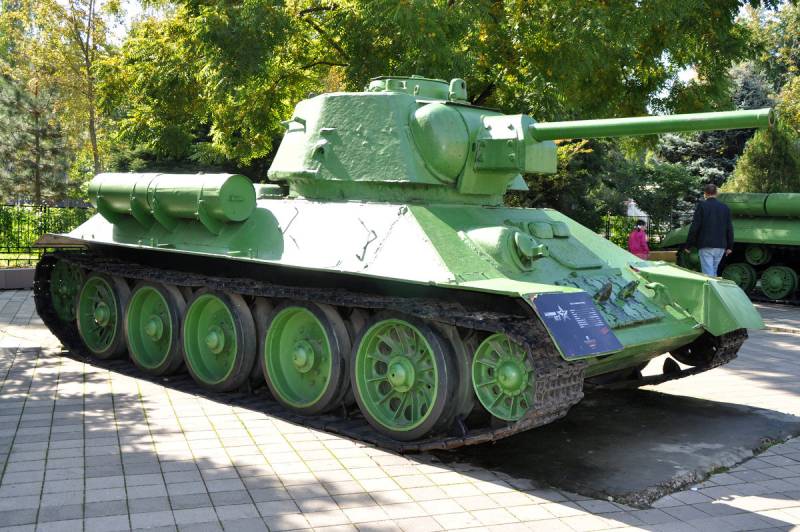
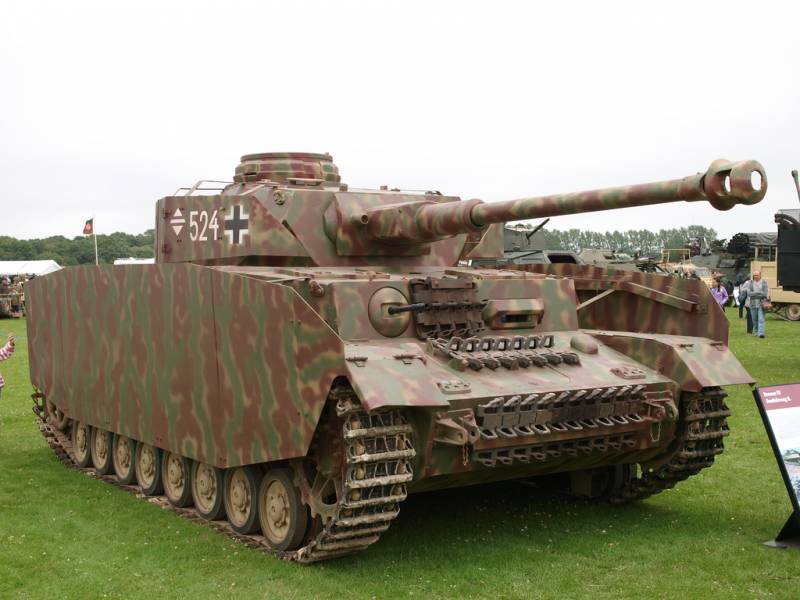
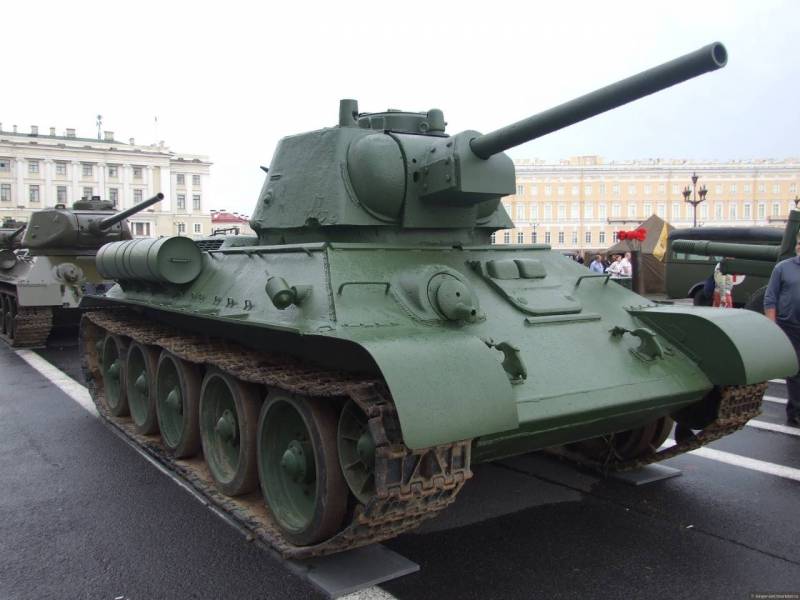
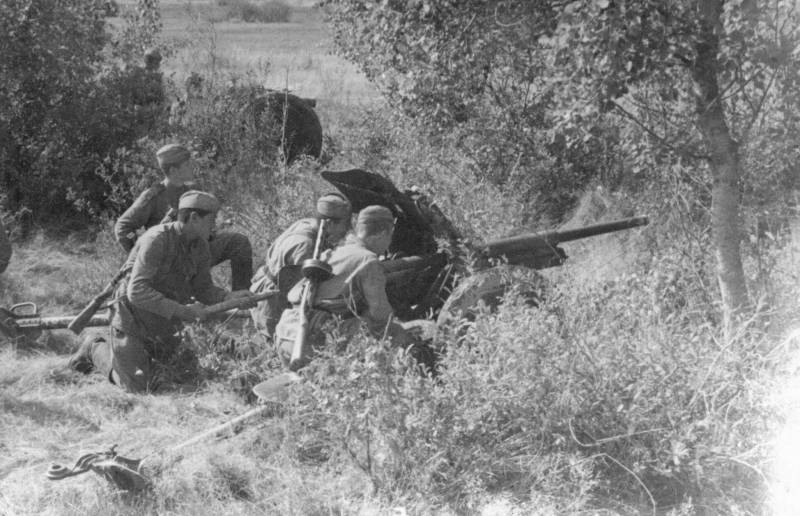
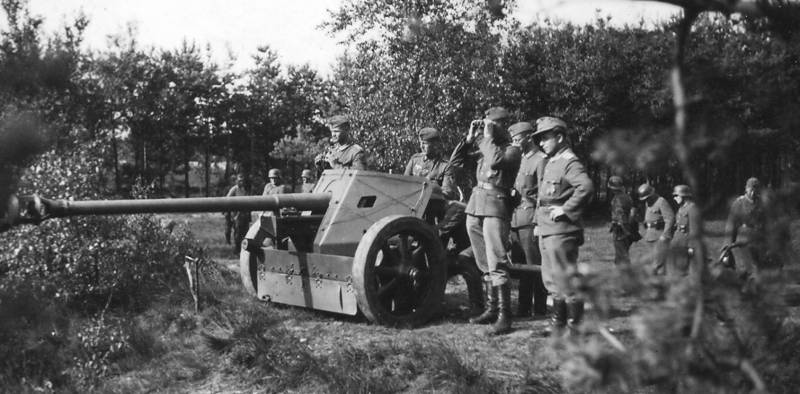
Information